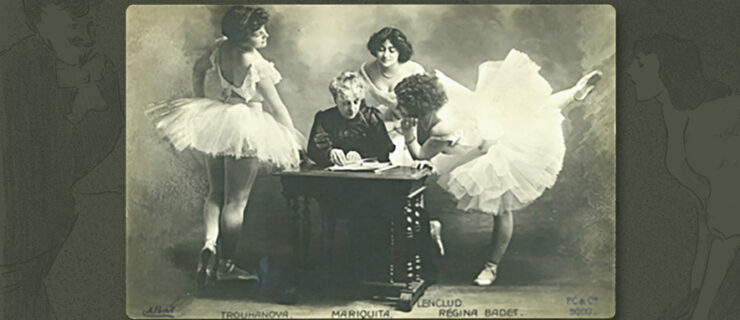Watch American Contemporary Ballet Reconstruct Ballet's Earliest Roots
Ballet’s earliest history can be traced as far back as the royal courts of Renaissance Italy (roughly 200 years before France’s King Louis the XIV established the first ballet academy in 1661). Surprisingly, many of these court dances were written down and still survive. Lincoln Jones, the artistic director of American Contemporary Ballet in Los Angeles, reconstructed several examples for the company’s Naked Souls of Kings and Queens program in April to show just how much ballet has evolved. The majority of the pieces were choreographed by Domenico da Piacenza, a well-known 15th-century dancing master; Jones also reconstructed a slow, stately dance (called a bassa danza) choreographed by the famous Renaissance statesman and arts patron, Lorenzo de‘ Medici. (His great-granddaughter, Catherine de’ Medici, introduced these dance traditions to the French court when she married King Henri II.)
The first and third dances were choreographed by Domenico da Piacenza. The second dance, called a bassa danza, was choreographed by Lorenzo de’ Medici.
Visually, these pieces may look like highly-stylized walking patterns. “But the patterns are very specific in their rhythm,” says Jones, “and there’s a specific rise and fall to them that’s very balletic.” The dancers aren’t turning out much or moving side to side; the stage at the time was vertically oriented towards the seated king and queen, and the performers would move forward or backward, or in circular patterns.
Steps were based on a small vocabulary consisting of bows, side steps, small jumps and traveling steps. “But they transform for different musical meters,” says Jones, noting that some dances, like the saltarello, are bouncy and quick, while others are low and gliding. Dance manuals of the time focused heavily on perfecting style, so that the subtlest nuance would be clear to those watching. “What they were doing was close to ballet of our time not in athleticism, but in how much refinement, body carriage and grace was required,” says Jones
A courtier’s performance on the dance floor was critical. “There was a belief during the Renaissance that the movements of the body reflected to movements of the soul,” says Jones. “If your movements were ugly or inharmonious, it meant that your soul was out of sync with the universe.” Fashion, too, was important; to reflect this, Jones worked with Tiger Curran (whose credits include assistant costume designer for The CW’s “Reign,”) to help costume his dancers in contemporary high-end designer fashions. “I wanted our audience to see it as they did at the time—it’s hard to get past Renaissance clothing,” he says.
Watching these early dances, it’s fascinating to think about about ballet’s journey, and how far it has come.





